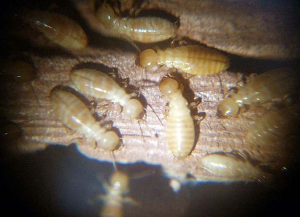A mans home is his castle or so the saying goes. With that mind picture, it’s easy to think of our fortress as impenetrable. After-all, a castle is built with thick stone walls, a moat that surrounds it and a huge draw bridge that when closed makes an unbreakable doorway.
The difference is, castles of old are made with real carved stones and huge guard towers to keep enemies at bay. Our modern day homes however, are truly just a facade that for the most part, look solid, but are really very porous when it comes to protection against termite entry and damage.
For the most part termite entry points on a home are caused by just 2 reasons.
#1- Over time homes settle, cracks develop, water pools in the 1/2 stopped up gutter etc. and termites take advantage of this wear and tear.
#2- We build them in. At times sloppy construction work leaves gaps, cracks or pathways where anything from a mouse to a roach can find its way in let alone the subterranean termite who only needs 1/64th of an inch and he can begin his assault on your castle.
One major default that allows termite entry has always been stuccos and veneers. The problem is that this thin skinned covering gives the termite protection from its enemies and allows them to go undetected by the homeowner and even the termite inspector sometimes for years. This is especially true when the stucco/veneer goes below soil grade or cement levels. When this happens, not only is it even easier for the light adverse blind termite to go above and below ground with ease, they’re also actually attracted to the area because of the moisture so often associated with the area. Once they latch on to an spot like this, serious damage is often the result because they have nothing impeding their feeding and may not be noticed until significant damage is done.
skinned covering gives the termite protection from its enemies and allows them to go undetected by the homeowner and even the termite inspector sometimes for years. This is especially true when the stucco/veneer goes below soil grade or cement levels. When this happens, not only is it even easier for the light adverse blind termite to go above and below ground with ease, they’re also actually attracted to the area because of the moisture so often associated with the area. Once they latch on to an spot like this, serious damage is often the result because they have nothing impeding their feeding and may not be noticed until significant damage is done.
The following video is an example of stucco and veneers where a home has been treated but the termite were able to continue attacking and were obviously overlooked for quite some time.




